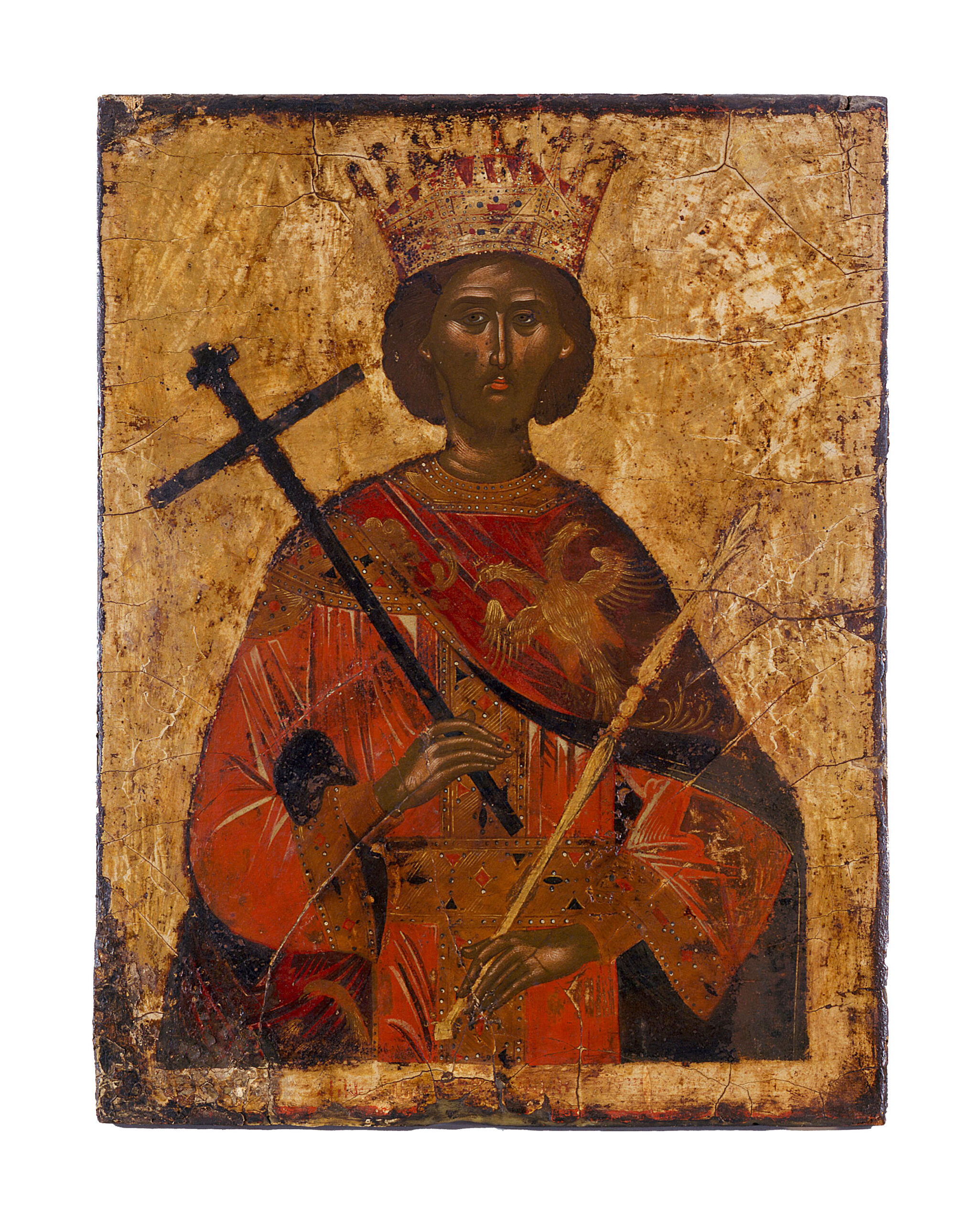

Icon depicting Saint Constantine
The saint is depicted to the top of the thighs and in frontal pose. With his right hand he holds before the chest a thin wooden cross with two horizontal arms, and in the lowered left hand a gold sceptre. He has luxuriant but short curly hair and a short round beard. He wears a large gem-studded crown with pointed finials and the opulent raiment of a Byzantine emperor, as imagined by Cretan painters of the sixteenth and seventeenth centuries: a light red closed sakkos with gold-embroidered and bejewelled edging on the neck – where it is so wide that it forms a maniakes – and on the sleeves, a cloth-of-gold bejewelled loros and a purple cloak with a gold-embroidered double-headed eagle. The mantle covers most of the left side of his chest and falls behind him; the right edge is drawn up and held in check by the saint’s bent right elbow.
The under layer of the flesh is olive green, worked with pinkish ochre tones over a small area. Despite the great difference in colour, the transition from shaded to illumined surfaces is smooth, without strong gradations. A few ochrewhite highlights emphasize the prominent points.
The few highlighted planes on the face, in combination with the profoundly contemplative gaze, heighten the figure’s expression of spirituality.
As far as the attire, the crown and the coloration are concerned, the icon is virtually identical to two icons in the Byzantine Museum in Athens, on which Saints Constantine and Helen are represented in full body. There are differences in the position of Constantine’s left hand, which on those icons is outstretched and holds the cross jointly with Helen, while in the right he holds the sceptre. The first icon, no. T. 1862, bears the signature of Victor, the second, no. T 2642, has a later added signature, again of Victor, which in all probability repeats the initial one which is lost. It is not unlikely that Victor was in fact the creator of this iconographic type; certainly the sparing use of highlights would date the icon in the Canellopoulos Museum to the middle years of the seventeenth century.
PUBLICATION
Skampavias C. 2007. Catalogue no. 177, in Skampavias K.—Chatzidakis N. (eds), Paul and Alexandra Canellopoulos Museum.Byzantine and Post-Byzantine Art, Athens, 322–323.
